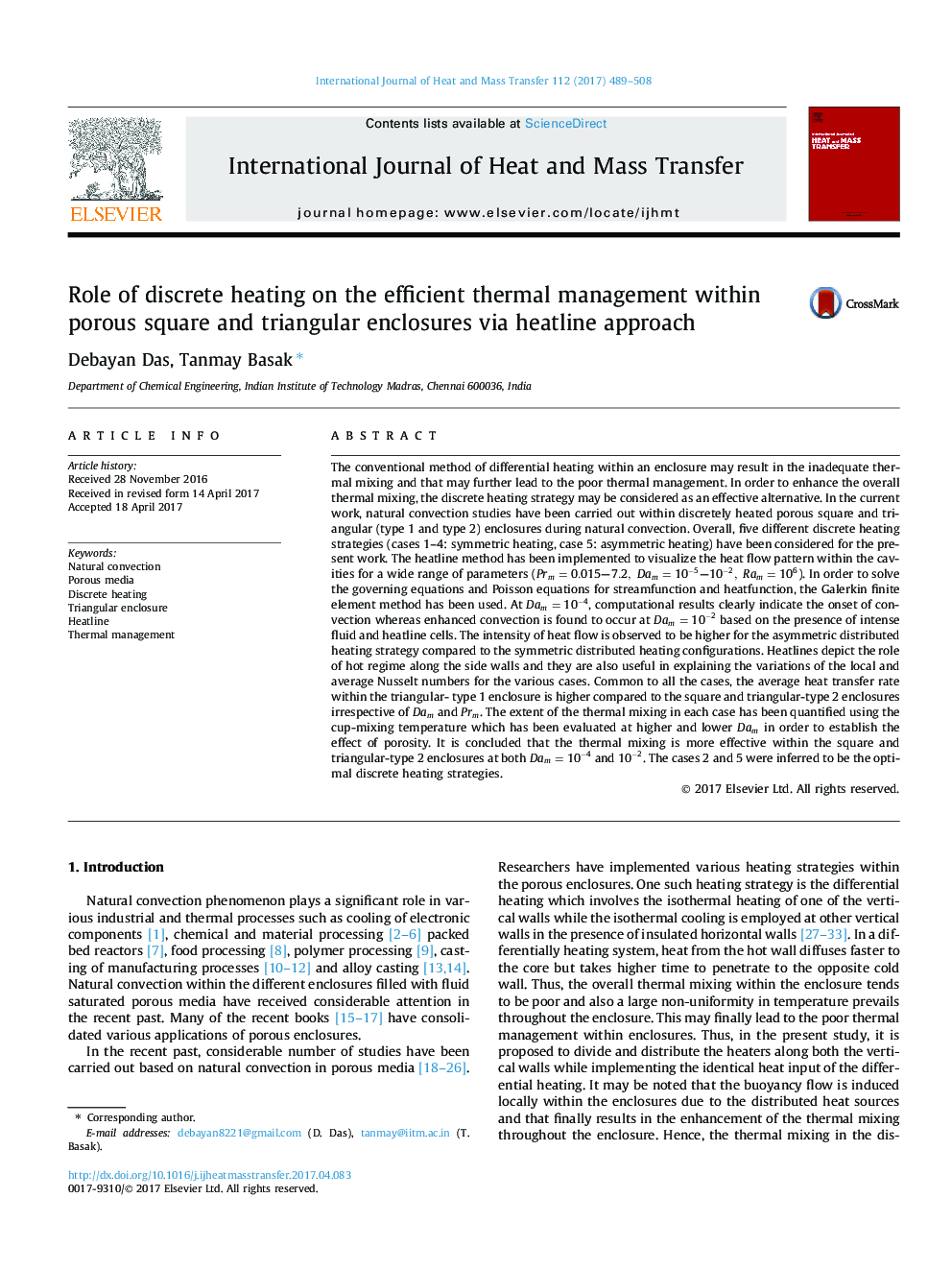| کد مقاله | کد نشریه | سال انتشار | مقاله انگلیسی | نسخه تمام متن |
|---|---|---|---|---|
| 4993675 | 1458029 | 2017 | 20 صفحه PDF | دانلود رایگان |
عنوان انگلیسی مقاله ISI
Role of discrete heating on the efficient thermal management within porous square and triangular enclosures via heatline approach
ترجمه فارسی عنوان
نقش گرمای گسسته بر مدیریت حرارتی کارآمد در محدوده مربعات متخلخل و محوطه مثلثی با استفاده از رویکرد خطی
دانلود مقاله + سفارش ترجمه
دانلود مقاله ISI انگلیسی
رایگان برای ایرانیان
کلمات کلیدی
پودر طبیعی رسانه های متخلخل، گرمایش گسسته، محوطه مثلثی، خط لوله، مدیریت حرارتی،
موضوعات مرتبط
مهندسی و علوم پایه
مهندسی شیمی
جریان سیال و فرایندهای انتقال
چکیده انگلیسی
The conventional method of differential heating within an enclosure may result in the inadequate thermal mixing and that may further lead to the poor thermal management. In order to enhance the overall thermal mixing, the discrete heating strategy may be considered as an effective alternative. In the current work, natural convection studies have been carried out within discretely heated porous square and triangular (type 1 and type 2) enclosures during natural convection. Overall, five different discrete heating strategies (cases 1-4: symmetric heating, case 5: asymmetric heating) have been considered for the present work. The heatline method has been implemented to visualize the heat flow pattern within the cavities for a wide range of parameters (Prm=0.015-7.2,Dam=10-5-10-2,Ram=106). In order to solve the governing equations and Poisson equations for streamfunction and heatfunction, the Galerkin finite element method has been used. At Dam=10-4, computational results clearly indicate the onset of convection whereas enhanced convection is found to occur at Dam=10-2 based on the presence of intense fluid and heatline cells. The intensity of heat flow is observed to be higher for the asymmetric distributed heating strategy compared to the symmetric distributed heating configurations. Heatlines depict the role of hot regime along the side walls and they are also useful in explaining the variations of the local and average Nusselt numbers for the various cases. Common to all the cases, the average heat transfer rate within the triangular- type 1 enclosure is higher compared to the square and triangular-type 2 enclosures irrespective of Dam and Prm. The extent of the thermal mixing in each case has been quantified using the cup-mixing temperature which has been evaluated at higher and lower Dam in order to establish the effect of porosity. It is concluded that the thermal mixing is more effective within the square and triangular-type 2 enclosures at both Dam=10-4 and 10-2. The cases 2 and 5 were inferred to be the optimal discrete heating strategies.
ناشر
Database: Elsevier - ScienceDirect (ساینس دایرکت)
Journal: International Journal of Heat and Mass Transfer - Volume 112, September 2017, Pages 489-508
Journal: International Journal of Heat and Mass Transfer - Volume 112, September 2017, Pages 489-508
نویسندگان
Debayan Das, Tanmay Basak,
